Racing To Our Initial Thoughts On The 2024 Beta 250 RR Race Edition
Story by Trevor Hunter, Photos by Trevor Hunter/Photos Project 395
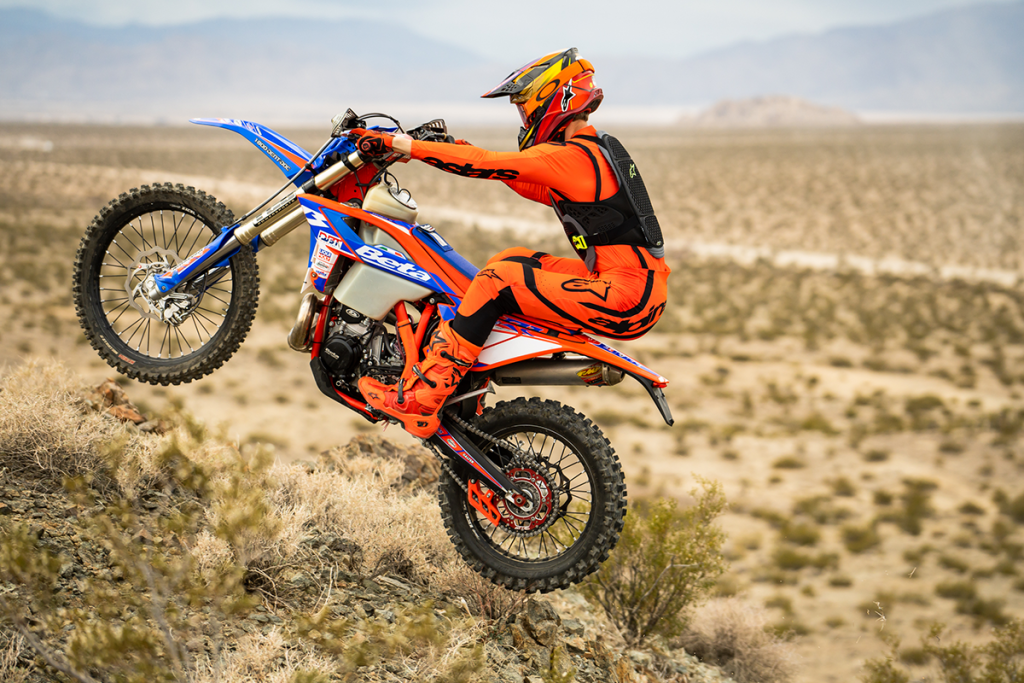
We’ve been putting in some miles on Beta’s 2024 250 RR Race Edition over the last month, and since it is their “race” model, why not take it racing to exploit its true character? After putting a couple hundred miles on the bike in the woods, we’ve taken it to two desert races (Checkers Check Chase Hare and Hound in Red Mountain, CA and Desert MC National Hare and Hound in Johnson Valley, CA) and a grand prix (SoCal MC NGPC in Delano, CA) in nearly stock trim to get a feel for the machine.
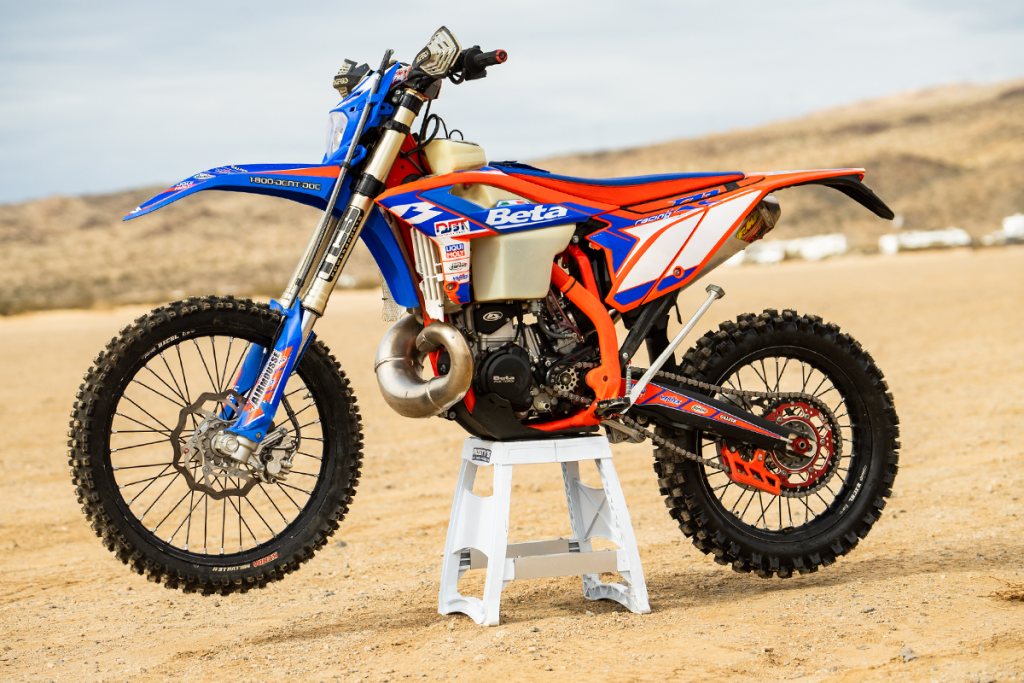
To start, our modifications list is quite short. Our first mod was the addition of an IMS fuel tank. The added fuel capacity ensured we could easily and safely go 40+ miles at race speed without worrying about fuel, plus the added dry-break would cut down on time spent in the pits. Next, we bolted on a FMF Turbinecore 2.1 Spark Arrestor to make the bike legal in the desert. Finally, we mounted some fresh tires and stuffed Airmousses in the tires to keep us flat free. The Airmousses are relatively new here in the US, but we’ve been testing them over the last couple months and have very positive feelings with them – more to come in a Product Test soon. Other than that, the bike is completely stock with some minor clicker changes and sag adjustments.
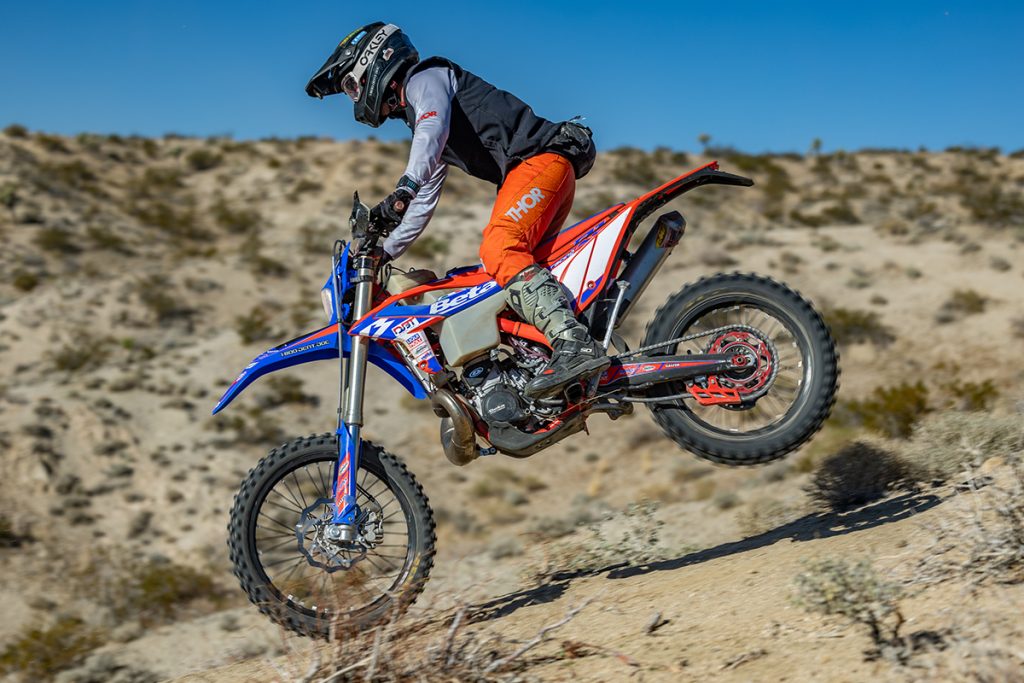
Our overall takeaways from riding/racing this bike are very positive, and to some of our testers who don’t have much experience on Beta’s in the past, the bike surprised them in a good way. Starting with the motor, the 250cc power plant boasts a lot of torque and is paired with a robust but smooth bottom end that gradually climbs through the mid range before signing off up top.
The 250cc motor runs similar to their 300 motor, just without the extra torque and bottom end grunt the big bore 300 offers. It’s not the most aggressive or exciting power delivery, especially up top as it signs off earlier than we’d like, but the motor pulls strongly down low and in true off-road terrain is very easy to ride. The engine lugs better than most carbureted two-strokes and is like a tractor in the tight stuff, running tall gears with minimal clutch work while chugging along and making one’s life easy.
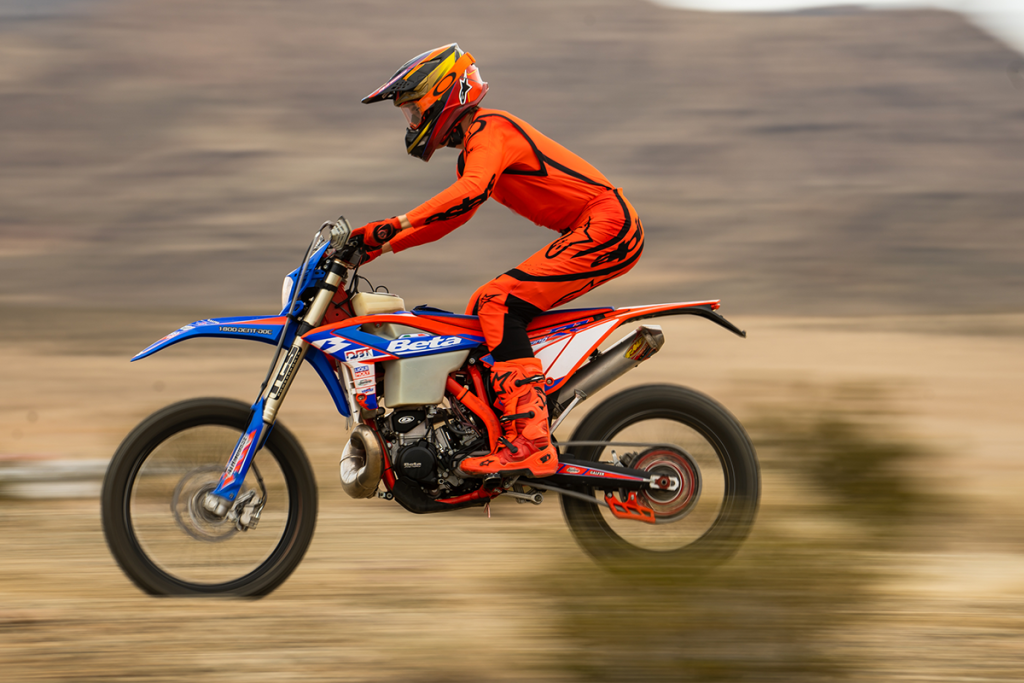
We’ll play with some jetting and possibly some pipe/silencer combos to see if we can get a little more top end out of this motor without sacrificing the torquey power than we’ve come to love on the Italian machine. The 6-speed transmission is very effective for off-road racing as we’ve been able to leave the stock gearing and cover a wide spread of terrain from wide open bomb runs to tight singletrack with no issues.
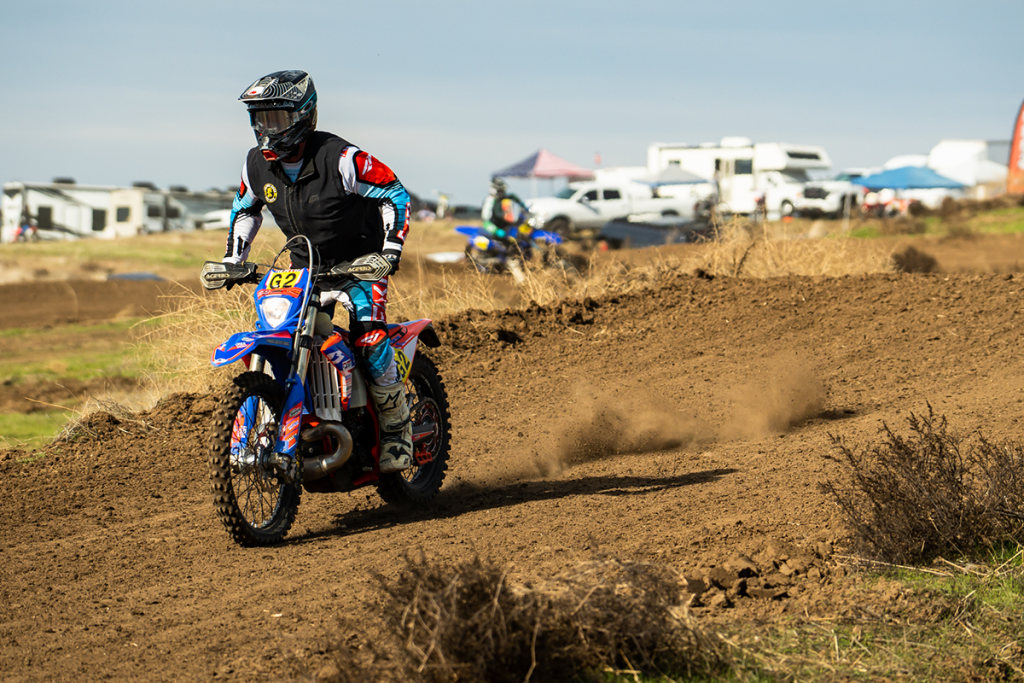
Suspension wise, we found it struggles in the faster west coast conditions that we’re used to, like most stock off-road race bikes do. We’ve bottomed this bike hard more than a few times and have learned to take a smoother approach when big whoops and g-outs are in the vicinity. In small bumps and at slower speeds, the KYB components do a fairly good job in bump absorption and offer comfort and traction in those areas. Another struggle we found at race speed was the fork diving under hard braking, even at slower speeds, upsetting the bike and causing the front end to knife. As we find with a lot of off-road race bikes, the Beta is on the softer side for A/Pro level racing here on the west coast, but at the very least the KYB components are more than capable with some personal tuning.
The chassis on the 2024 RR Race Edition has been updated and we feel is an improvement over the previous gen bike. In prior years, loading the front end, particularly under heavy braking at higher speeds, the front end would wallow and unsettle – something that our test riders of most all skill levels felt and didn’t particularly like. For 2024, Beta aimed to remedy this issue by stiffening up the chassis around the head tube area and much to our liking, this feeling is all but gone. We still have a stable chassis that feels light, but we now have more confidence pushing higher speeds and riding more aggressively on the updated steel chassis.
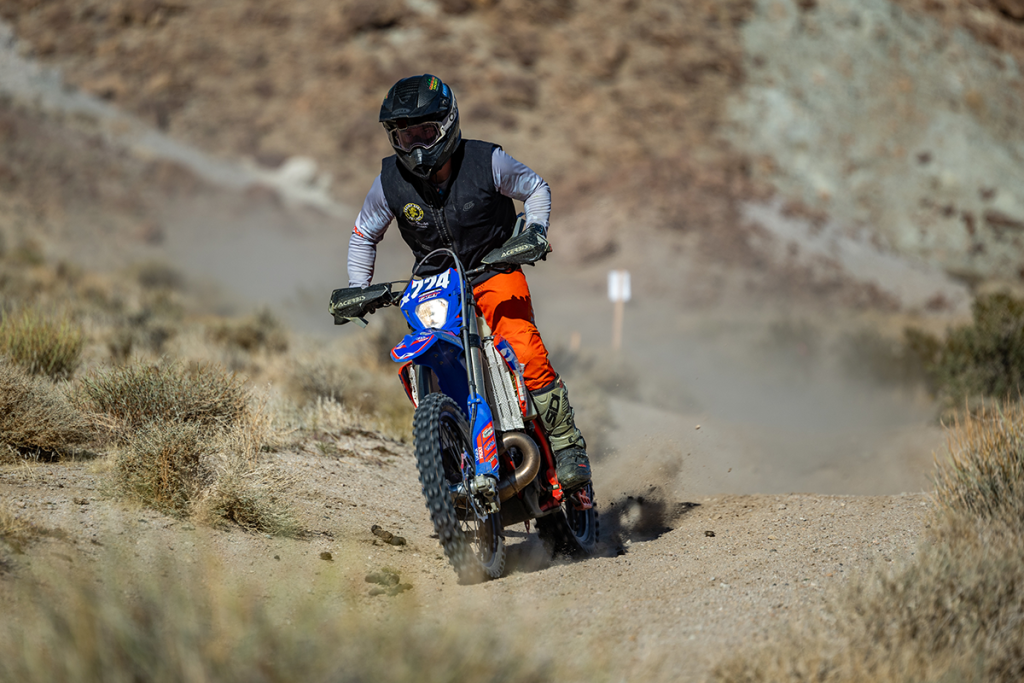
Some highlights we like from years past are the slim, narrow rider triangle. The bike feels very thin and helps contribute to its lightweight feeling on the trail, though a more comfortable seat would go a longggggg ways over the stocker. In a racing application, the bike fires to life instantly and the e-start is much appreciated on the trail. Standard maintenance is fairly simple with a tool-less air filter design, a push-button seat, and an easy to reach oil drain. Mixing gas is no issue since the Race Edition model doesn’t feature an oil injection system, something most racers are okay with.
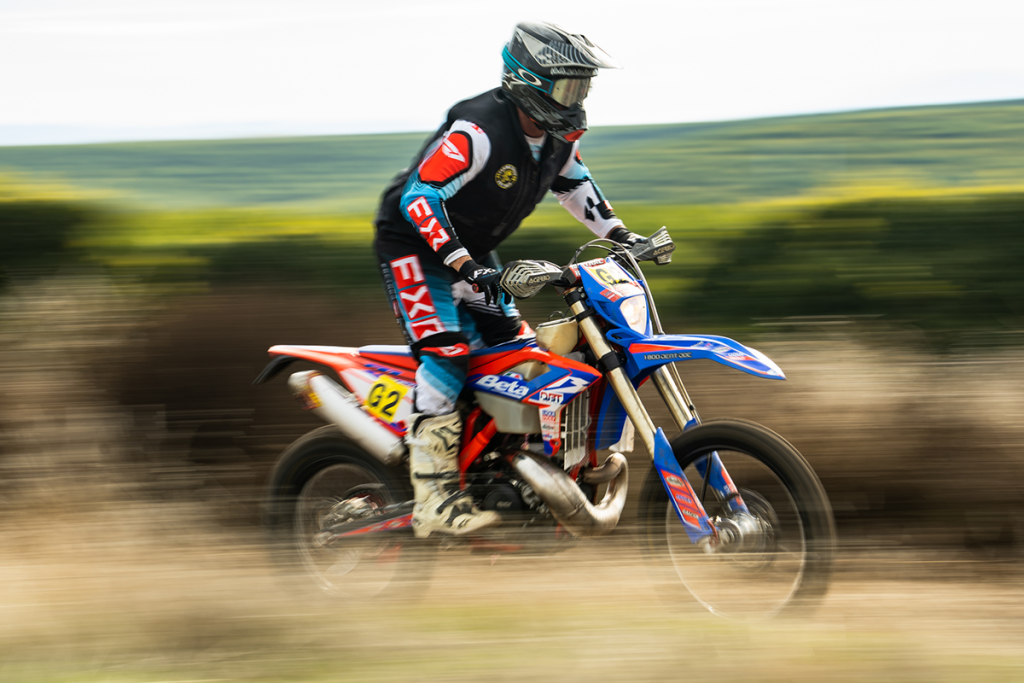
After a couple weekends of racing in different conditions with multiple test riders, what do we want? Some suspension work will go a long way on this bike for the typical west coast conditions. It’s very soft for high speed racing applications and will greatly benefit from a revalve to suit our needs. Additionally, though we’ve ridden bikes much worse in the past, a steering stabilizer wouldn’t hurt this bike – especially if aimed at desert racing. Those two items we feel will greatly improve the bike for the direction we want to go with it.
We’re also interested in playing with pipes/silencers to get a little more pep out of the bike. While it’s smooth and tractable, it doesn’t pull quite as hard as some other 250 two-strokes. We’d love to find that extra pulling power and some more over rev without sacrificing the torque we love from this motor. Some Fasst Co. Flexx Handlebars are also on the shortlist of parts on order as our wrists are feeling some effects of overriding the stock suspension several weekends in a row.
Stay tuned as we slowly piece this bike together and fine tune it – in stock trim it’s very capable, but we know there’s more under the hood with a little work done to it.


